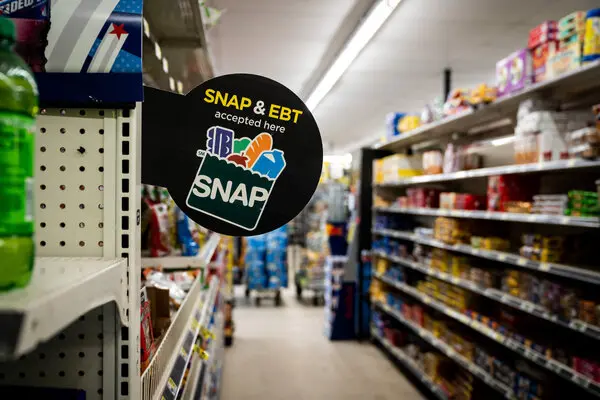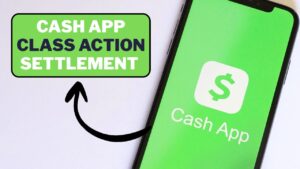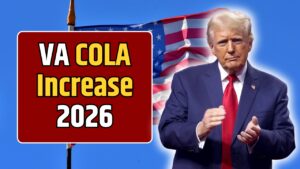Join on WhatsApp
Get the latest updates directly on WhatsApp – motivation, news & more!
The One Big Beautiful Bill Act (OBBBA) is already proving to be one of the most consequential — and controversial — laws of Trump’s second term. And nowhere is its impact being felt more sharply than in America’s food assistance program, SNAP, which serves as the nation’s last line of defense against hunger.
Beginning November 1, 2025, sweeping changes under OBBBA will overhaul how SNAP operates — shifting financial responsibility from the federal government to the states, tightening work requirements, and cutting eligibility for millions of low-income Americans. The U.S. Department of Agriculture (USDA) has confirmed the new framework, calling it a move toward “shared accountability.” Critics call it a gutting of the safety net.
SNAP’s Safety Net, Unraveled
For decades, the Supplemental Nutrition Assistance Program (SNAP) has been a bedrock of the American welfare system — offering grocery assistance to roughly 42 million people. It’s often the only thing standing between working-class families and hunger.
But under the One Big Beautiful Bill Act, states must now co-fund SNAP, a sharp departure from its long-standing federal financing model. States with weaker budgets — particularly in the South and Midwest — are already warning that they simply can’t afford their new obligations.
At the same time, the law adds stricter work requirements for so-called “able-bodied adults without dependents” (ABAWDs), demanding at least 20 hours per week of work, training, or approved volunteering.
| Key Change | Previous Rule | New Rule (Post-OBBBA) |
|---|---|---|
| Funding Responsibility | Fully federal | Shared between federal and state governments |
| ABAWD Benefit Duration | Indefinite, with possible waivers | Limited to 3 months in a 3-year window unless working 20+ hrs/week |
| Exemptions | Disabled, elderly, pregnant | Only disabled and pregnant individuals |
| Effective Date | N/A | November 1, 2025 |
“If you can work, you must,” the administration says. That’s been the rallying cry from Trump’s economic and social policy team — framing the change as a push for self-reliance, not punishment.
The Administration’s Rationale: “A Common-Sense Reform”
In an op-ed published by The New York Times, several key administration figures — including Health Secretary Robert F. Kennedy Jr., CMS Administrator Dr. Mehmet Oz, and Agriculture Secretary Brooke Rollins — defended the new rules.
They argued that OBBBA will “restore dignity through work” and “end cycles of dependency that trap people in poverty.”
“Capable adults receiving benefits must work, participate in job training, or volunteer at least 20 hours a week,” the op-ed reads. “Those who can work must do so.”
The White House claims the reform will save billions over the next decade, although neither the Congressional Budget Office (CBO) nor independent economists have yet verified those numbers.
Administration officials also argue that with unemployment below 4%, the U.S. economy can absorb additional workers — a claim that some labor economists dispute, citing uneven job growth in rural areas.
“Cuts to SNAP Are Cuts to Local Economies”
Anti-hunger advocates are sounding the alarm. According to the Food Research & Action Center (FRAC), every $1 in SNAP benefits generates $1.80 in local economic activity — money that circulates through grocery stores, farmers markets, and small-town businesses.
“When you cut SNAP, you’re not just cutting food. You’re cutting jobs, sales, and stability,” FRAC said in a statement.
FRAC’s data shows that one in seven rural households depend on SNAP. Under the new cost-sharing structure, many states may either trim benefits or tighten eligibility to manage their budgets.
The USDA has said states can apply for hardship waivers during recessions, but OBBBA makes those waivers harder to obtain — requiring detailed economic justification and federal approval. That change could leave millions of struggling residents in limbo if state unemployment spikes.
Real-World Impact: Who Loses the Most
The hardest hit will likely be:
- Childless adults aged 18–54 who fall under the ABAWD category
- Low-income workers with unstable schedules (gig and temp workers often fail to meet the 20-hour rule)
- Homeless individuals and veterans
- Rural residents with limited access to job training programs
Meanwhile, pregnant people and those with verified disabilities remain exempt, but states must re-verify disability status more frequently — another bureaucratic hurdle.
The CBO estimates that up to 5.2 million Americans could lose SNAP access by early 2026 if states cannot meet their new cost-sharing obligations.
Local Economies Brace for Shock
Beyond households, entire communities are bracing for fallout. Feeding America, the nation’s largest food relief network, expects demand for food banks to surge by 30% or more in early 2026.
“This is going to put pressure on every food pantry in the country,” said Claire Babineaux-Fontenot, CEO of Feeding America. “When government benefits shrink, charitable systems fill the gap — but we’re already at capacity.”
Small grocers in low-income areas could also suffer as SNAP dollars decline. “We’ll lose customers overnight,” said one Alabama store owner interviewed by The Tennessean. “When people can’t afford to buy food, we can’t afford to keep the lights on.”
Political and Public Reactions
The policy has reignited an old debate: Should food assistance be a federal guarantee or a state responsibility?
Democrats and moderate Republicans have largely blasted the changes as punitive. Senator Debbie Stabenow (D-MI), chair of the Senate Agriculture Committee, called the policy “cruel and shortsighted,” warning that it “punishes poverty rather than solving it.”
Progressive lawmakers are reportedly drafting a countermeasure — tentatively titled the Fair Food Access Act — that would restore federal funding and ease the new work rules.
The Trump administration, however, insists OBBBA reflects the “will of the working taxpayer.” In a statement to reporters, a senior White House official said the reform is part of a “broader economic reset” designed to transfer power “from Washington back to the states and communities where accountability belongs.”
What Happens Next
States now face an enormous administrative task:
- Redesigning eligibility systems
- Tracking work participation data for ABAWDs
- Funding their share of SNAP costs
Many governors — including some Republicans — are warning of implementation chaos. “We’re being handed a federal program without federal dollars,” said one Midwest governor.
By January 2026, all states must submit compliance reports to the USDA detailing funding sources and enforcement procedures. Noncompliance could result in reduced federal reimbursements — effectively cutting aid further.
| Timeline | Implementation Milestone |
|---|---|
| Nov 1, 2025 | OBBBA SNAP provisions take effect |
| Dec 2025 | States begin verifying work-hour compliance |
| Jan 2026 | First quarterly state funding reports due |
| Mid-2026 | CBO impact review and preliminary benefit-loss estimates released |
Fact Check: OBBBA and SNAP
| Claim | Reality |
|---|---|
| SNAP is being abolished | False. The program remains but is being restructured and co-funded by states. |
| Work exemptions still apply | True. Pregnant and disabled individuals remain exempt. |
| Federal funding continues at current levels | False. States now bear part of the cost. |
| Every state must comply by 2026 | True. Implementation begins November 1, 2025, with full compliance by 2026. |
| The policy will save billions | Unverified. The USDA estimates savings, but no independent audit confirms it. |
The Bigger Picture
The OBBBA’s SNAP overhaul represents more than a budget change — it’s a philosophical shift. Supporters see it as restoring personal responsibility; critics see it as dismantling federal protections for the poor.
Whichever side you fall on, one thing is clear: beginning this fall, millions of Americans will face new hurdles just to afford groceries.
The ripple effects — economic, political, and humanitarian — will likely define the next chapter in the nation’s ongoing debate over who deserves help, and who pays for it.
FAQs
When do the new SNAP rules take effect?
They take effect November 1, 2025, under the One Big Beautiful Bill Act (OBBBA).
Who will lose benefits first?
Able-bodied adults without dependents (ABAWDs) who can’t meet the 20-hour work rule are at highest risk.
Can states opt out?
No. States can apply for hardship waivers, but approval standards are now stricter.
How many people might lose benefits?
The CBO estimates about 5.2 million could lose access by 2026.
How can recipients check eligibility?
Visit the official USDA SNAP page at www.fns.usda.gov/snap or contact your local benefits office.




